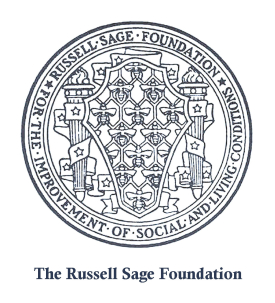About This Book
This booklet discusses how social centers promote reform movements. It notes that social centers provide patriotic education of immigrants through public ceremonies held for their naturalization, civic and health education, the promotion of baby welfare, the elevation of political discussions, and the dignification of voting through the maintenance of balloting booths. The booklet concludes with a list of foundation pamphlets on the topic of the social center.
CLARENCE A. PERRY was an urban planner, sociologist, and educator.
RSF Journal
View Book Series
Sign Up For Our Mailing List
Apply For Funding
About This Book
This pamphlet is the second of a projected series of papers intended to offer those interested in planning relief abroad a digest of pertinent material prepared by organizations other than the Russell Sage Foundation. It covers needs to be met in the Near East; racial, religious, political, and other problems; forms of assistance; and achievements.
JAMES L. BARTON, an American Protestant missionary, established educational institutions in the Near East.
Download
RSF Journal
View Book Series
Sign Up For Our Mailing List
Apply For Funding
About This Book
This pamphlet is the second of a projected series of papers intended to offer those interested in planning relief abroad a digest of pertinent material prepared by organizations other than the Russell Sage Foundation. It covers needs to be met in the Near East; racial, religious, political, and other problems; forms of assistance, and achievements.
JAMES L. BARTON, an American Protestant missionary, established educational institutions in the Near East.
RSF Journal
View Book Series
Sign Up For Our Mailing List
Apply For Funding
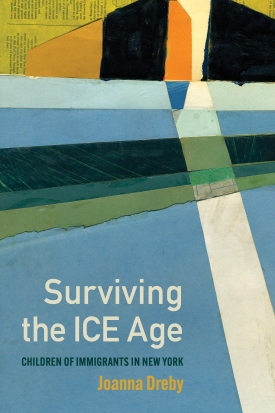
Surviving the ICE Age
About This Book
“The 1.2 million US deportations from 2014 to 2024 are more than a statistic. They are a compendium of 1.2 million tragedies. In Surviving the ICE Age, Joanna Dreby harnesses her formidable ethnographic skills to vividly depict the pain, suffering, and trauma inflicted on the children of New York’s immigrants, most of whom are US citizens. It offers a sobering chronicle of the damage being done to the next generation of Americans that should be read by all.”
—DOUGLAS S. MASSEY, Henry G. Bryant Professor of Sociology and Public Affairs, School of Public and International Affairs, Princeton University
“Joanna Dreby and her team powerfully illuminate the profound generational burdens of immigration enforcement. Surviving the ICE Age reveals how silencing, disruption of childhood relationships, and challenges to belonging shape development long after enforcement episodes occur. As we face increasingly virulent anti-immigrant policies, this compassionate and urgent book reveals what is truly at stake for the next generation when we prioritize deportation over humane immigration reform.”
—CAROLA SUÁREZ-OROZCO, professor in residence and director, Immigration Initiative, Harvard Graduate School of Education
“Joanna Dreby’s Surviving the ICE Age is a compelling and deeply textured exploration of the profound and often overlooked effects of immigration enforcement on immigrant children’s lives and futures. Timely and essential, this book offers a powerful account of a critical issue, making a major contribution to our understanding of its human cost—and to the migration literature. An important work from a distinguished social scientist.”
—MICHAEL FIX, senior fellow and former president, Migration Policy Institute
For the past three decades, U.S. immigration policy has become increasingly restrictive, focused on enforcement both at the southern border and across the country. A shift in emphasis from status regularization to criminalization has had rippling effects for families and communities. While we know much about how immigration enforcement impacts the undocumented, we know less about longstanding effects on U.S. citizens. In Surviving the ICE Age, sociologist Joanna Dreby draws on interviews with young adults with foreign-born parents to better understand what it was like to grow up during a time of heightened U.S. migratory control.
Dreby shows that a restrictive approach to immigration creates problems over time and across generations. These issues occur regardless of one’s citizenship status and go beyond deportations. Despite having pride in their heritage, her interviewees did not talk much about immigration. She refers to this unwillingness—and at times, inability—to speak about immigration as silencing. Silencing in a community or family is often intended to protect children, but this can leave them with little information about their backgrounds and status, leading to fear and anxiety instead. Self-silencing often resulted from traumatic experiences tied to enforcement episodes, which sometimes took the form of memory loss or emotional withholding. Dreby finds that experiences with the immigration system that disrupted relationships in a child’s household arising from family separations, moves, or changing roles in the family had especially long-term effects, causing, at times, ongoing mental health issues. Even the risk of immigration involvement left some young adults feeling vulnerable and undermined their sense of safety and security as U.S. citizens.
Dreby also highlights stories that offer hope. Young adults developed strategies to persevere, and children who grew up in communities and families that openly talked about migration felt empowered and fared much better, especially when they had access to resources, such as adequate food and shelter, mental health services, and community support. Dreby calls for policies and practices to mitigate the harms of restrictive migratory control on children’s wellbeing, such avoiding the arrest of parents in front of children and ensuring that U.S. citizen children’s interests are considered in immigration court without their direct involvement.
Surviving the ICE Age details the generational harms caused by U.S. immigration policy and offers suggestions for a better way forward.
JOANNA DREBY is professor of sociology at the University of Albany, State University of New York
RSF Journal
View Book Series
Sign Up For Our Mailing List
Apply For Funding
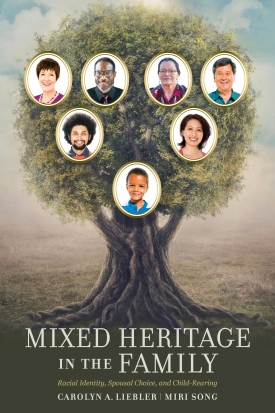
Mixed Heritage in the Family
About This Book
“Mixed Heritage in the Family takes mixed-race studies to the next generation. Carolyn Liebler and Miri Song break new ground by pushing multiraciality beyond the individual and considering how it influences individuals’ choice of spouse, their child-rearing, and the transmission of racial identity to their children. In its mixed methods, its multiple group comparisons, and its careful analysis of place and context, this book is a major advance for the field.”
—WENDY D. ROTH, professor of sociology, University of Pennsylvania
“Through the skillfully blended analysis of census data and in-depth interviews, Carolyn Liebler and Miri Song expand our understanding of mixed-heritage racial self-reporting, especially as it is entwined with the racial identification of spouses and children. Equally importantly, they also advance our knowledge of how local social contexts shape racial identity options.”
—ANN MORNING, James Weldon Johnson Professor of Sociology and divisional dean for the social sciences, New York University
“Mixed Heritage in the Family is a signature achievement. Using interview accounts and decades of national data, this book provides the most comprehensive assessment of mixed-race adults to date. Carolyn Liebler and Miri Song offer a window into the many ways identification, relationship formation, and child-rearing all factor into how mixing can alter the lines between groups. Additionally, these authors reveal how critical it is to consider the role of geography. Liebler and Song provide a sophisticated and accessible narrative to reshape how sociologists understand the role of racial mixture in drawing and redrawing boundaries around racial groups.”
—JENIFER BRATTER, professor of sociology and associate chair, Rice University
As interracial unions and multiracial people become more common in the United States, mixed-heritage people have come to be regarded by some as a bellwether of race relations in the country. Is the growth of this population a sign that we are now in a post-racial era and our racial identities no longer impact our daily lives? In Mixed Heritage in the Family, sociologists Carolyn A. Liebler and Miri Song explore how racially mixed people navigate racial boundaries as they choose spouses and raise families.
Liebler and Song break new ground by being the first to combine and integrate the study of three aspects of life for people of mixed racial heritage – identity, spouse choice, and childrearing. This integrated approach reveals how complicated racial identification can be, and how it can be expressed in one’s choice of partner or in how one raises their children. The authors draw on census data and interviews with Asian-White, Black-White, and American Indian/Alaska Native-White mixed people to better understand how their identity choices are related to their choice of spouse and how they racially identify and raise their children.
Increasingly, mixed people in the United States are identifying with multiple races. However, the authors find that mixed-race people are not a monolith and that how and why they identify varies considerably between and within each group. They found several common factors that influenced whether mixed-race people choose to identify as biracial, solely White, or solely as a racial minority. These factors include the history of the specific minority race in the U.S., the racial demographics of where they were raised, their social and cultural exposure to their White and non-White backgrounds, their attachment to their racial backgrounds, and how they are seen racially by others.
The way mixed-heritage people identify was closely tied to the race of their spouse. However, having a White spouse did not necessarily mean the mixed-race person felt disconnected from their non-White heritage. White spouses varied in their racial consciousness and their interest in the culture of their mixed-race spouse’s minority ancestry. The spouse’s race, and the nature of racial overlap between the spouses, was also key in the racial upbringing of a mixed-heritage person’s child. In families where the parents share a minority racial heritage, couples lean into their shared ‘family race’, which guides their parenting choices and family life. Many mixed heritage parents found it important to foster racial pride in their children and combat negative racial stereotypes.
Liebler and Song caution against making superficial predictions about the state of race relations in the U.S. based on an increase in the multiracial population. They show that race has not become less salient in the lives of many mixed-race people—American society is not post-racial.
Mixed Heritage in the Family breaks new ground, provides compelling insights in its examination of the lives of mixed-race people, and shows how complicated racial identification can be.
RSF Journal
View Book Series
Sign Up For Our Mailing List
Apply For Funding
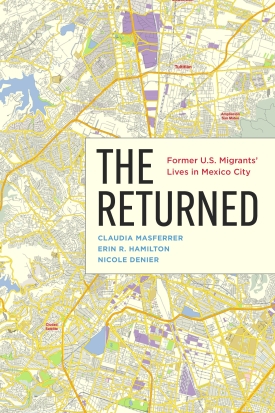
The Returned
About This Book
“Written with a strong theoretical background and based in in-depth interviews, The Returned explores the complex and often contradictory experiences of return migration to Mexico. It reveals the mixed emotions of individuals who find themselves trapped between two worlds—one left behind with lost economic opportunities and the other not fully embraced. The authors illuminate the challenges and transformations that shape the lives of returnees, providing a nuanced perspective on the forces that drive and define migration within a complex policy framework.”
—MARÍA DOLORES PARÍS POMBO, profesora-investigadora, Departamento de Estudios Culturales, El Colegio de la Frontera Norte, Tijuana, B.C.
“The Returned makes an important contribution to research on migration, both by focusing on the less researched reality of return migration, which has grown dramatically in recent decades, and by illuminating the struggles returnees face—the sense of being norteado (‘disoriented’ is one translation) when they go to live in Mexico City. Claudia Masferrer, Erin R. Hamilton, and Nicole Denier expertly analyze the experience of deportees and de facto deportees (those who return to Mexico with a deported spouse or family member) and trace how return migration fits into the life course. An important book.”
—ROBERT COURTNEY SMITH, professor of sociology, CUNY Graduate Center and Baruch College
“The Returned tells the story of a historic turning point in which more Mexicans come back from the United States than emigrate. Lively interviews reveal how families cope with binational separation, finding work, and starting over in Mexico City. This is a highly readable contribution to understanding return migration.”
—DAVID FITZGERALD, Gildred Chair in U.S.-Mexican Relations and professor of sociology, University of California San Diego
In the first two decades of the 21st century, more than two million Mexican migrants returned to Mexico from the United States. Between 2010 and 2020, the number of people who returned to Mexico was so large that, for the first time in at least fifty years, more people entered Mexico from the United States than entered the United States from Mexico. Many of these migrants were destined for urban areas, and we know little about how they fare after they return to cities. In The Returned, sociologists Claudia Masferrer, Erin R. Hamilton, and Nicole Denier examine the experiences of returned migrants in Mexico City, one of the largest metropolitan areas in the world.
Masferrer, Hamilton, and Denier draw on interviews with former U.S. migrants living in Mexico City to better understand the experience of return migration to urban areas. Each of the migrants they spoke with lived in the United States for long periods with noncitizen status during the last four decades. During this time, U.S. immigration policy became increasingly focused on restriction and enforcement, which made it difficult for migrants to safely move back and forth across the border for work or to visit family without documentation. The authors find that upon their return, migrants in Mexico City felt disoriented and lost and had difficulty adapting to a massive urban environment where there is little support for returnees. They struggled to translate their work experience from their time in the U.S. to find quality jobs. Additionally, many found their family lives upended as they reunited with or formed families in the U.S.. Some found themselves separated from family members still in the U.S. with no ability to legally visit them. Others brought their families back to Mexico, some of whom were U.S. citizens and had never been to Mexico before. They, too, struggled to adapt and integrate to life in Mexico City.
The authors use the experiences of return migrants to discuss policies and practices that would improve their lives and ease their reintegration. To help with the disorientation they experience, returnees proposed ongoing psychological support with mental health professionals who have knowledge and training in the social and legal issues that return migrants face. Return migrants also advocated for policies to enhance skill matching, job creation, and entrepreneurship, as many felt the occupational skills they developed in the U.S. were undervalued in Mexico. To address family separation, returnees argued for legal and policy reform to accommodate family reunification.
The Returned is an illuminating account of the difficulties faced by return migrants and their families in Mexico City.
CLAUDIA MASFERRER is an associate professor, Centre for Demographic, Urban, and Environmental Studies, El Colegio de México
ERIN R. HAMILTON is a professor of sociology, University of California, Davis
NICOLE DENIER is an associate professor, Department of Sociology, University of Alberta
RSF Journal
View Book Series
Sign Up For Our Mailing List
Apply For Funding
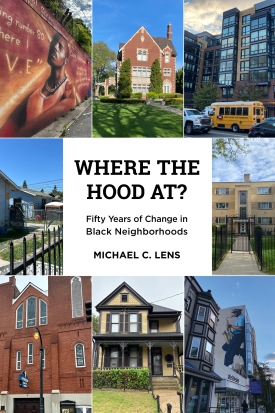
Where the Hood At?
About This Book
“Michael Lens provides an unprecedented systematic overview of economic and social conditions in Black neighborhoods for the past half century. By moving beyond the pathos narrative that has characterized much of the scholarship on Black neighborhoods, Where the Hood At? will help us to understand the Black neighborhood in all its complexity and diversity. Where the Hood At? is a must-read for students of neighborhoods, urban planners and policymakers, and the Black experience.”
—LANCE FREEMAN, James W. Effron University Professor of City and Regional Planning and Sociology, University of Pennsylvania
“Where the Hood At? describes in impressively comprehensive terms how Black neighborhoods in America have evolved over the last half century. Rigorous statistical documentation is clothed with an accessible writing style. This is a welcome study addressing a critical gap in scholarship related to racial segregation, neighborhood effects, and ethnographies of place. It reminds us why Black neighborhoods, not just individuals, are an important locus for analyzing issues of racial equity.”
—GEORGE C. GALSTER, Clarence Hilberry Professor of Urban Affairs and Distinguished Professor, emeritus, Department of Urban Studies and Planning, Wayne State University
“Michael Lens has produced a comprehensive profile that describes the trajectory of the Black neighborhood in American cities over five decades. It is a much-needed and authoritative addition to our understanding of the Black neighborhood in American cities. Lens’s work provides ample fodder for policy debates ranging from integration and gentrification to the relative importance of place-based policymaking. We will be relying on Lens’s analysis of the Black neighborhood for a long time to come. Where the Hood At? challenges our assumptions about Black neighborhoods in American cities and their paths over the past fifty years. Just as importantly, the comprehensiveness of Lens’s analysis provides a clear and robust foundation for thinking about the future of these neighborhoods.”
—EDWARD GOETZ, professor and director, Center for Urban and Regional Affairs, Humphrey School of Public Affairs, University of Minnesota
Substantial gaps exist between Black Americans and other racial and ethnic groups in the U.S., most glaringly Whites, across virtually all quality-of-life indicators. Despite strong evidence that neighborhood residence affects life outcomes, we lack a comprehensive picture of Black neighborhood conditions and how they have changed over time. In Where the Hood At? urban planning and public policy scholar Michael C. Lens examines the characteristics and trajectories of Black neighborhoods across the U.S. over the fifty years since the Fair Housing Act.
Hip hop music was born out of Black neighborhoods in the 1970s and has evolved alongside them. In Where the Hood At? Lens uses rap’s growth and influence across the country to frame discussions about the development and conditions of Black neighborhoods. Lens finds that social and economic improvement in Black neighborhoods since the 1970s has been slow. However, how well Black neighborhoods are doing varies substantially by region. Overall, Black neighborhoods in the South are doing well and growing quickly. Black neighborhoods in the Midwest and the Rust Belt, on the other hand, are particularly disadvantaged. The welfare of Black neighborhoods is related not only to factors within neighborhoods, such as the unemployment rate, but also to characteristics of the larger metropolitan area, such as overall income inequality. Lens finds that while gentrification is increasingly prevalent, it is growing slowly, and is not
as pressing an issue as public discourse would make it seem. Instead, concentrated disadvantage is by far the most common and pressing problem in Black neighborhoods.
Lens argues that Black neighborhoods represent urban America’s greatest policy failures, and that recent housing policies have only had mild success. He provides several suggestions for policies with the goalof uplifting Black neighborhoods. One radical proposal is enacting policies and programs, such as tax breaks for entrepreneurs or other small business owners, that would encourage Black Americans to move backto the South. Black Americans migrating South would have a better chance at moving to an advantaged Black neighborhood as improving neighborhood location is higher when moving across regions. It would also help Black Americans expand their political and economic power. He also suggests a regional focus for economic development policies, particularly in the Midwest where Black neighborhoods are struggling the most. He also calls for building more affordable housing in Black suburbs. Black poverty is lower in suburbs than in central cities, so increasing housing in Black suburbs would allow Black households to relocate to more advantaged neighborhoods, which research has shown leads to improved life outcomes.
Where the Hood At? is a remarkable and comprehensive account of Black neighborhoods that helps us to better understand the places and conditions that allow them flourish or impedes their advancement.
MICHAEL C. LENS is a professor in the Luskin School of Public Affairs, departments of urban planning and public policy, University of California, Los Angeles.
RSF Journal
View Book Series
Sign Up For Our Mailing List
Apply For Funding
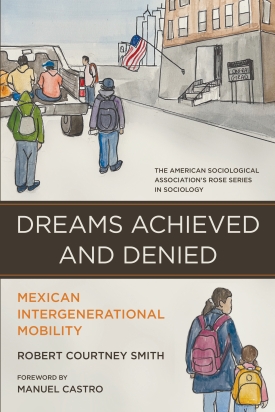
Dreams Achieved and Denied
About This Book
“In this sequel to Mexican New York, Robert C. Smith solidifies his reputation as an intimate interpreter of social change over the life course. Dreams Achieved and Denied tells a subtle story about the upward mobility of children of Mexican immigrants striving to keep their side of the immigrant family bargain. This is a must-read to understand the experiences of the largest immigrant group in the United States.”
—David FitzGerald, Gildred Chair in U.S.-Mexican Relations and professor of sociology, University of California, San Diego
“The culmination of a two-decade study of immigrant youngsters, Dreams Achieved and Denied exemplifies the power of research that truly matters. With rigor and passion, Robert C. Smith captures experiences deeply significant to policymakers and to all who care about the multifaceted American journey.”
—Patricia Fernández-Kelly, professor of sociology, Princeton University
“A valuable contribution to contemporary debates of social mobility in the United States, Dreams Achieved and Denied shows in great detail the mechanisms that promote upward mobility and those that tragically curtail it. Based on an impressive longitudinal study, this remarkable book offers a worm’s-eye view into the experiences of adult children of Mexican immigrants pursuing their dreams in New York City. Persuasively argued and rigorously researched, this book is a timely and socially important work that deserves a wide readership.”
—Roberto G. Gonzales, Richard Perry University Professor of Sociology and Education, University of Pennsylvania
U.S.-born Mexicans in New York City have achieved perhaps the biggest single jump in mobility in American immigration history. In 2020, 42 percent of second-generation U.S.-born Mexican men and 49 percent of U.S.-born Mexican women in the city had graduated from college–versus a 13-14-percent second-generation college graduation rate for most other places in recent decades. How did this happen? In Dreams Achieved and Denied, sociologist Robert Courtney Smith (Graduate Center, City University of New York) examines the laws, policies, and individual and family practices that promoted–and inhibited–their social mobility.
For over twenty years, Smith followed the lives and mobility of nearly one hundred children of Mexican immigrants in New York City. Immigrant-inclusive and mobility-promoting measures here include enabling undocumented people to attend public colleges at in-state tuition rates and the city’s subway and school choice systems, which enabled students to attend better schools or take opportunities outside their neighborhoods.
Smith finds that keeping the immigrant bargain – whereby children of immigrants redeem their parents’ sacrifice by doing well in school, helping their parents and siblings, and becoming “good” people (in their parents’ words) – helped them achieve better adult outcomes and lives. Having mentors, picking academically strong schools and friends, and using second chance mechanisms also promoted mobility. However, lacking legal status blocked mobility, by preventing others from benefiting from these same mobility-promoting policies.
Dreams Achieved and Denied deeply analyzes the historic upward mobility of U.S.-born Mexicans in New York City.
ROBERT COURTNEY SMITH is a professor of sociology, immigration studies and public affairs at the CUNY Graduate Center
RSF Journal
View Book Series
Sign Up For Our Mailing List
Apply For Funding
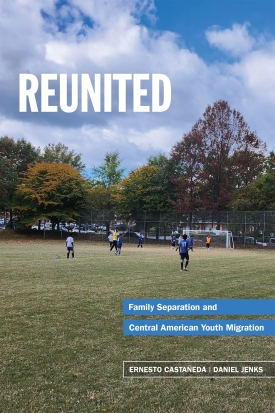
Reunited
About This Book
“Timely, meticulously researched and argued, Reunited deftly weaves the voices of Central American youth migrants into cutting-edge scholarly arguments to produce a compelling account that is inspiring, humane, and powerful. Essential reading for scholars, students, policymakers, and anyone interested in understanding the so-called root causes of Central American migration.”
—CECILIA MENJÍVAR, Dorothy L. Meier Chair in Social Equities and professor of sociology, University of California, Los Angeles
“Reunited captures the full complexity of contemporary Central American migration to the United States, explaining both the structural and historical forces propelling it and the ways in which families are surviving in their midst. This important book humanizes one of the most politically and morally challenging issues of our time.”
—LEAH C. SCHMALZBAUER, Karen and Brian Conway ‘80, P’18 Presidential Teaching Professor of American Studies and Sociology, Amherst College
“Reunited is an essential account of the nefarious effects of inhumane U.S. immigration policy that separates Central American children from their immigrant parents. Ernesto Castañeda and Daniel Jenks offer a nuanced and compelling portrayal of the enduring toll of these separations on child well-being and family ties, as well as the challenges and emotional labor involved in ‘picking up the pieces’ once children migrate to the United States to reunite with their parents, while also suggesting reforms that would aid their integration in U.S. society.”
—CHIARA GALLI, assistant professor, Department of Comparative Human Development, University of Chicago
Over the last dozen years, an increasing number of children from El Salvador, Honduras, and Guatemala began arriving without parents at the U.S.-Mexico border. In many cases, the parents had left for the United States years earlier. In Reunited sociologists Ernesto Castañeda and Daniel Jenks explain the reasons for Central American youth migration, describe the journey, and document how minors experienced separation from their families and their subsequent reunification.
In interviews with migrant youth, their sponsors, and social services practitioners in and around Washington, D.C., Castañeda and Jenks find that these minors migrate on their own for three main reasons: gang violence, lack of educational and economic opportunity, and a longing for family reunification. The authors note that youth who feel comfortable leaving and have feelings of belonging upon arrival integrate quickly and easily while those who experience trauma in their home countries and on their way to the United States face more challenges.
Castañeda and Jenks recount these young migrants’ journey to the U.S. border, detailing the difficulties passing through Mexico, their encounters with U.S. Customs and Border Protection officials, and staying in shelters while their sponsorship, placement, and departure are arranged. The authors also describe the tensions the youth face when they reunite with family members they may view as strangers. Despite their biological, emotional, and financial bonds to these relatives, the youth must learn how to relate to new authority figures and decide whether or how to follow their rules.
The experience of migrating can have a lasting effect on the mental health of young migrants. Although Castañeda and Jenks find that Central American youths’ mental health improves after migrating to the United States, they remain at risk of further problems. They are likely to have lived through traumatizing experiences that inhibit their integration. Difficulty integrating, in turn, creates new stressors that exacerbate PTSD, depression, and anxiety. Consequently, schools and social service organizations are crucial, the authors argue, for enhancing youth migrants’ sense of belonging and their integration into their new communities. Bilingual programs, Spanish-speaking PTA groups, message boards, mentoring of immigrant children, and after-school programs for members of reunited families are all helpful in supporting immigrant youth as they learn English, finish high school, apply to college, and find jobs.
Offering a complex exploration of youth migration and family reunification, Reunited provides a moving account of how young Central American migrants make the journey north and ultimately reintegrate with their families in the United States.
ERNESTO CASTAÑEDA is director of the Center for Latin American and Latino Studies at American University.
DANIEL JENKS is a doctoral student at the University of Pennsylvania.
RSF Journal
View Book Series
Sign Up For Our Mailing List
Apply For Funding
Pagination
- Page 1
- Next page

